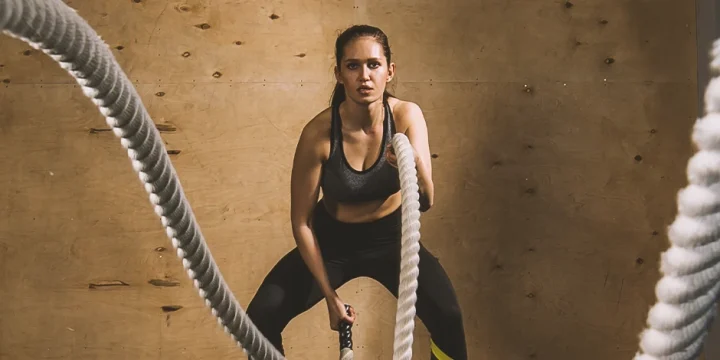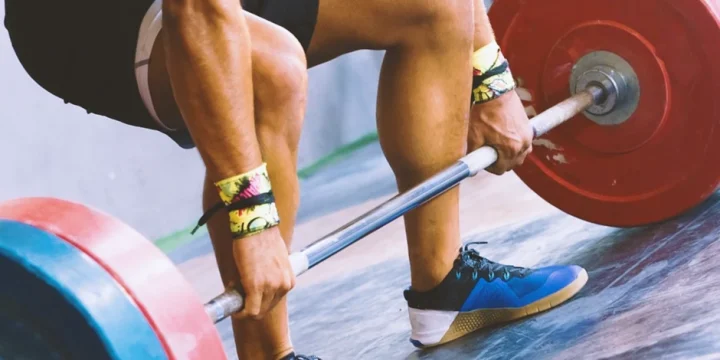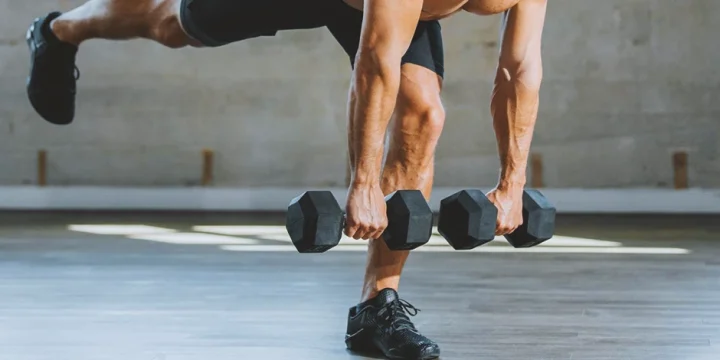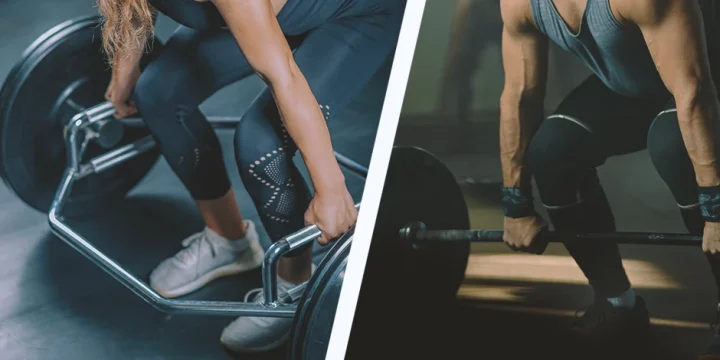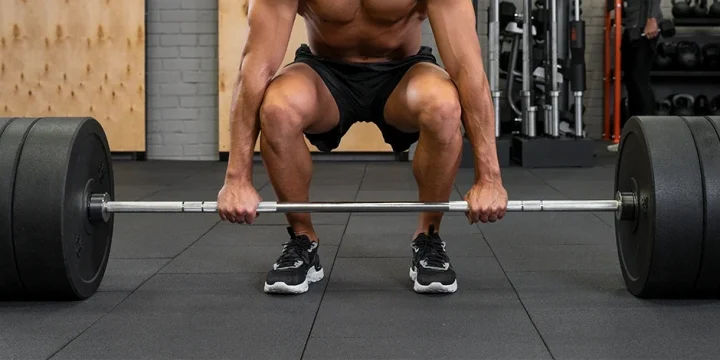The deadlift is a complex exercise that strengthens the hamstrings, glutes, and lower back.
As a certified personal trainer, I've had clients asking about the difference between the sumo and conventional deadlift variations.
To provide them with a precise answer, I went through a vast amount of research to understand the sumo and conventional deadlift mechanism.
In this article, I will detail my findings and expertise on the similarities and differences between the sumo and conventional deadlift, benefits, performance differences, and the pros and cons of performing both exercises.
Quick Summary
- The article provides an in-depth comparison between sumo and conventional deadlifts, focusing on the differences in hand and foot placement and how these variations affect muscle engagement and lifting technique.
- It details the specific muscles targeted by each deadlift style, noting that sumo deadlifts require more hip and inner thigh strength, while conventional deadlifts place more stress on the hamstrings and lower back.
- Research from PubMed shows that in sumo deadlifts, the thigh position is 11-16 degrees more horizontal, and vertical trunk and thigh positions are 5-10 degrees greater, while conventional deadlifts involve 25-40% more vertical bar distance, mechanical work, and energy expenditure.
- Drawing from extensive training experience, the article suggests that the choice between sumo and conventional deadlifts should be based on individual comfort, physical structure, and specific training goals, with both styles offering unique benefits for muscle development and strength training.
What Is Sumo and Conventional Deadlift

Conventional Deadlift
In my experience as a trainer, conventional deadlifts stand out as one of the best complex exercises, engaging the entire posterior chain.
This type of exercise works well for stimulating each muscle group since it requires stretching and bending your knees and hips to accomplish the activity.
Meanwhile, the arms and back are working hard to support a weighted barbell.
Because the conventional deadlift is such a difficult exercise, good technique is essential.
If you're just starting, moderate the weights or use your body weight until you're comfortable with the right setup.
How to perform a conventional deadlift:
- Stand with both feet shoulder-width apart, toes straight, and the center of your foot directly beneath the bar.
- Bend over and hold the bar with the arms shoulder-width apart.
- Hinge at your hips, push your shoulders together, lift your chest and head, and lift the barbell. Keep the bar near your body as possible throughout the exercise.
- Extend your arms till your body is erect.
- Return to the beginning position by sliding the barbell down your body while maintaining weight control.
- Repeat for the desired number of reps.
Sumo Deadlift
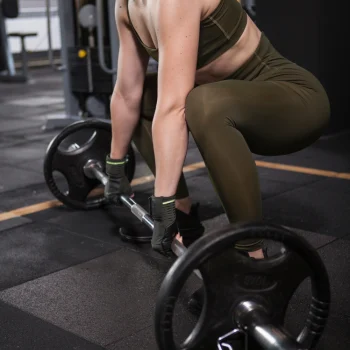
From my personal and coaching experience, sumo deadlifts are a full-body motion that's excellent for building muscle mass. The key difference lies in the foot placement, which I've found significantly affects the exercise's impact on muscle engagement.
To sumo pull, begin with your feet pointed outward and wider than shoulder-width apart.
To descend to grasp the barbell while maintaining your trunk upright, back neutral, and core tight, you'll need good hip mobility, which allows your knees to press outward and the hips to rotate externally during the exercise.
"The sumo deadlift incorporates both hip and knee hinge movements. This implies that while you're at the bottom stance, you should feel pressure in your hip and leg muscles."
- Alex Perry, Certified Strength & Conditioning Specialist
If you're unsure how flexible your hip joints are, we recommend checking your mobility before performing the motion.
How to perform sumo deadlift:
- Spread your legs as wide as possible in a comfortable position, with your toes pointing outward at an angle of 45°.
- Bend over and grasp the barbell with both hands inside your knees, shoulder-width apart.
- Hinge at the hips, keep your shoulders back, straighten your chest and head before pulling the barbell up. Keep the bar near your body as possible throughout the exercise.
- Extend your arms till your body is erect.
- Return to the beginning position by sliding the bar down your torsos while maintaining weight control.
- Repeat for the desired number of reps.
Sumo Deadlift vs. Conventional Deadlift: Muscles Worked

The deadlifts effectively engage many big muscular groups.
Instead of going through each muscle used in the deadlift, this list concentrates on the major muscles engaged the most.
Many of the same muscles are used by sumo and conventional deadlift variations, but how you place your lower body in each action affects which muscles work the hardest.
Upper Body:
- Traps
- Erector spinae
- Latissimus dorsi
Lower Body:
- Hamstrings
- Calves
- Quads
- Glutes
When scheduling deadlifts, you can incorporate them on leg day, in your full-body exercise, or even in your back regimen.
Hip flexors, biceps and forearms, psoas, and piriformis are the most worked muscles.
Your core also contracts throughout the exercise to support your low back and maintain your trunk upright.
Sumo Deadlifts Muscles
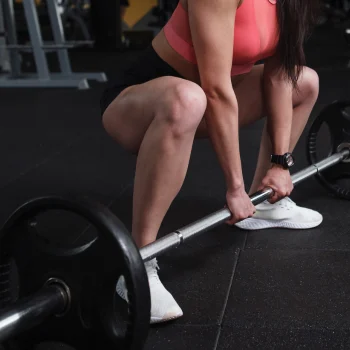
While they engage most of the same muscle fibers, your technique dictates which ones work harder throughout each action.
Because your feet are wide and pointing outward, you need far more hip and inner thigh strength than in a traditional deadlift, which means your hip adductors and flexors must work much harder in the sumo deadlift technique.
Based on my training sessions, I've found the sumo deadlift to be an excellent choice for those who haven't yet focused on adductor workouts. It's a great way to introduce significant work on these muscles in a functional manner.
Furthermore, research from the National Center for Biotechnology Information website reveals that sumo deadlift exercises specifically target the vastus medialis and lateralis as well as your quadriceps more than traditional deadlifts [1].
Also, according to another study from the National Center for Biotechnology Information website, sumo deadlift exercise works the tibialis anterior, a muscle on the lower leg before the shin bone [2], and the glutes more.
Conventional Deadlift Muscles
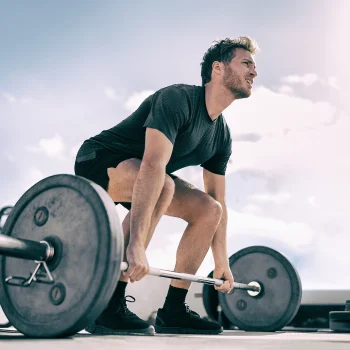
Again, this is where the form variety comes into play.
In my experience, conventional style deadlifts place significant stress on the hamstrings and lower back, particularly the erector spinae. This is due to the closer leg position and forward-pointed feet, which I've noticed makes a noticeable difference in muscle activation [3].
And, because erector spinae workouts are important for lower back health, integrating complex movements such as the conventional deadlift style is an effective way to engage the back muscles while simultaneously working the leg muscles.
Also, use a lifting belt if you have experienced low back problems.
The gastrocnemius, or calf muscles, are also more employed in the traditional deadlift [4].
So, perform the conventional deadlift when you want to work on your hamstrings, lower back, and calves.
Similarities: Sumo Deadlift vs. Conventional Deadlift

While the two forms have evident distinctions, they also have significant form similarities. The cues listed here apply to any deadlift variant.
- Setting your hips back
- Keeping your hips and lats engaged
- Maintaining a firm core
- Assuming a neutral head posture
- Gripping the ground with your feet
Furthermore, these exercises work all the key muscular groups in your lower and upper body, such as the back, quads, arms, hamstrings, and glutes.
The sumo and conventional deadlifts require you to place weight onto a barbell and draw it from the ground while extending your hips and back.
These two motions will enable you to employ the most weight of any workout accessible. This implies that if you master these, you can acquire substantial strength.
Performance Difference: Sumo Deadlift vs. Conventional Deadlift

This part will highlight the motion you should concentrate on based on your training.
More Glute Muscle
Although both the sumo deadlift and conventional deadlift engage your gluteus maximus, the sumo deadlift's broader stance will impact more of your glutes.
So, if you want to optimize glute growth, we recommend concentrating on the sumo deadlift.
Maximum Strength
Both deadlift actions will aid in the development of raw strength.
Which one you should concentrate on for maximum power will depend on your aim and the one you are naturally stronger at.
The sumo deadlift relies on activating the glutes, hips, and legs to commence the first portion of the pull.
In contrast, conventional deadlifting balances the lower back and hamstrings more evenly.
"Sumo deadlifting necessitates more hip and glute strength, whereas traditional deadlifting needs greater lower back and hamstring strength. Both will demand some leg (quad) and upper back (traps, lats, etc.) strength, as well as general core and grip strength."
- John Gaglione, Certified Strength & Conditioning Specialist
You'll have to put each deadlift through its paces to find the most comfortable.
It varies depending on the individual and is mostly influenced by genes — for example, torso length, wingspan, and height.
Increased Quad Muscle
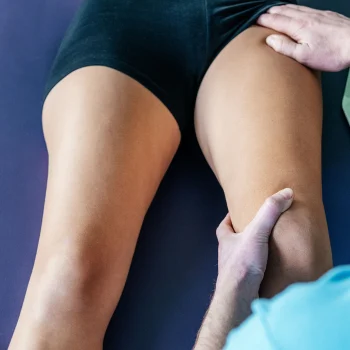
Each pull targets the same muscles across their whole range of motion.
One study discovered little changes between each deadlift and the pace at which different muscles activated.
The researchers recorded muscle firing rates using electromyography (EMG) measurements and followed 16 distinct muscle locations.
Four muscles exhibit statistically significant differences in the data above.
The sumo style deadlift combines more legs and a somewhat greater forward lean, so the vastus medialis and lateralis – outer/inner quad muscles — are stronger [5].
Perform sumo pulls if you desire larger quadriceps. Therefore, to get larger quadriceps, do sumo pulls.
Pros and Cons: Sumo Deadlift vs. Conventional Deadlift
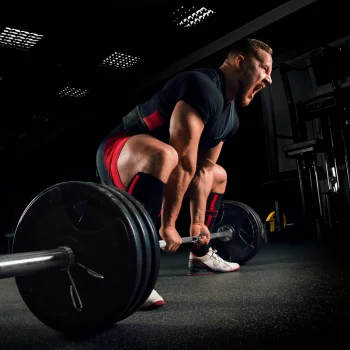
As previously said, one deadlift isn't superior to the other, and both have advantages and disadvantages.
Because they are complex exercises that train numerous muscle groups, sumo and conventional deadlift benefit body fat burning.
The sumo may be more effective than traditional deadlifts since it stimulates the quadriceps, glutes, and inner thighs more.
Both workouts may also be beneficial to posture if executed with good form.
Sumo Deadlift Pros & Cons
- Sumo deadlifts are unrivaled for developing substantial lower-body strength. It's a complex exercise that trains many muscle groups simultaneously. The sumo deadlift variant works the quadriceps, glutes, hamstrings, inner thighs, and core.
- Sumo is also a great exercise for increasing hip flexibility and mobility. The broad sumo stance necessary for effective performance encourages the hips to broaden up, which can aid in increasing their range of motion.
- The sumo puts less strain on the knees and lower back, making it an excellent choice for people who have suffered from these types of issues.
- Sumo deadlift also lets you lift a greater load than conventional methods, making it an excellent alternative for people wishing to improve their strength.
- Sumo is a wonderful leg and hip workout that may help you improve your overall lower-body power.
- Due to the needed posture, the sumo deadlift setup may be tough to perfect.
- It can be more difficult on the groin and hips, making it a less-than-ideal alternative for people with these injuries.
Conventional Deadlift Pros & Cons
- Conventional deadlifting is a real strength test. It's a multi-muscle workout that targets the hamstrings, core, and lower back. Traditional deadlifts can help you gain substantial strength and power.
- It is also an excellent workout for increasing grip strength. Because you must grab the weight with your hands outside your legs and compress the bar, this might help you gain grip strength with time.
- The conventional deadlifts may be difficult to master owing to their narrow stance.
- It can be more difficult on the lower back, rendering it a less-than-ideal alternative for people with these injuries.
Sumo vs. Conventional Deadlift: How to Choose the Right One

Hip Structure
You may find one sort of deadlift more comfortable than another based on how your femurs (thigh bones) connect to your hips.
If your femur connects at a 120-degree angle, you may find the sumo and standard deadlifts equally pleasant.
If your femur connects at a 110-degree angle, sumo deadlifting may be painful because the upper part of your femur will collide with your hip bone when you deadlift with a broad stance.
The sumo deadlift may be preferable if your femur attaches at an exceptionally obtuse angle of 140 degrees or greater.
There are intricate tests you can perform to determine what kind of hips you have; however, for most individuals, this is unnecessary.
A simpler way is to test both positions and see which causes pain, tightness, pinching, or discomfort.
Once you've determined this, you should know which version to perform regularly and which to shelf.
Experience
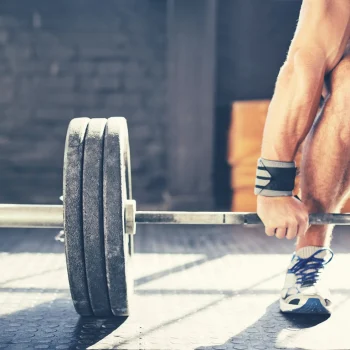
The sumo deadlift is more complex than the standard and takes much more flexibility to complete effectively.
A better method is to learn how to perform a deadlift traditionally and stay with it for at least the first 6 to twelve months of weightlifting.
Give it a shot if you believe you'd be more suited to the sumo deadlift after that period.
The sole exception to this guideline is if you try the traditional deadlift and find it too painful (for instance, hip and lower back pain).
Feel free to begin with sumo in this scenario — just be ready for a tougher learning curve.
Preference
Your preference is crucial when determining which deadlift technique to adopt.
Deadlifting is often regarded as the most mentally and physically taxing workout, so picking a technique you prefer is a good idea.
Your expertise level, hip structure, and physique proportions will influence your preference, as you will likely want to practice most comfortably.
Both types, though, will feel identical to many individuals. If this is the case, the only requirements are that you can complete the exercise correctly and that you prefer it.
And what if you can do both?
Do both. A beneficial way of accomplishing this is to include the traditional deadlift in the training routine for 8-10 weeks, then deload before replacing the conventional deadlifts with the sumo lifts for the next 8–10 weeks of training.
Then, alternate between the workouts every couple of months or continue with one for an extended period.
While there isn't much data to support this kind of periodization, there is a strong theoretical case that it may lower your risk of overuse injuries (produced by repeating the same exercises without enough rest).
Anthropometry
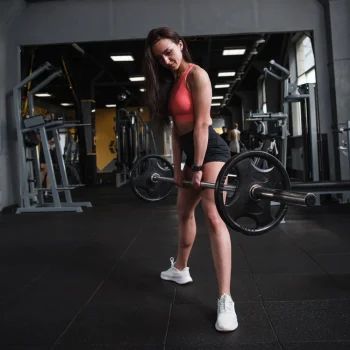
The length of your hands in relation to your torso is another aspect that might determine whether you're better suited to perform conventional or sumo deadlift variation [6].
Take a measuring tape and note the following:
- Length of your arms to determine if you have short or long arms.
- Torso from the broadest section of your hip bone to the top of your shoulder joint.
- Arm from your shoulder to the top of your middle finger.
- The entire body, from head to toe.
Perform conventional deadlifts if you have:
- Long torso and long arms
- Short torso and long arms
- Average torso and long arms
- Short torso and average arms
- Long torso and average arms
Perform sumo deadlifts if you have:
- Long torso and short arms
- Short torso and short arms
- Average torso and short arms
- Short torso and average arms
- Long torso and average arms
Should You Wear a Belt?
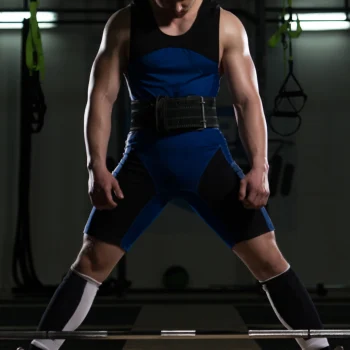
You should wear a belt when you are deadlifting heavy weights.
A good lifting belt can protect your lower back by keeping your spine from rounding. It works by providing you with a surface to support your stomach.
By bracing into a belt, you produce a lot of stiffness in your torso, which aids in preserving your natural spine. The disadvantage of a lifting belt is that the core muscles aren't as engaged throughout the lift. Therefore, they won't develop as strong on their own.
"The usual rule of thumb is to belt up if you're lifting more than 80% of your one-rep max."
- Chris Colucci, Certified Personal Trainer
FAQs
Is Conventional Deadlift Easier Than Sumo?
No. A conventional deadlift is not easier than a sumo deadlift variation. The sumo deadlift is sometimes easier than the standard lift because of the reduced range of motion and less stress on the back.
Is Conventional or Sumo Better for Building Muscle?
Both sumo and conventional deadlift are better for building muscles. The sumo deadlift emphasizes the quadriceps and glutes, whereas the standard deadlift emphasizes the hamstrings, calf, and erector spinae. Meanwhile, they're also exercising the arms, hip flexors, and remaining back muscles.
Is Sumo or Conventional Deadlift Better for Glute Growth?
Sumo deadlifts are better for the glutes. Although both the conventional and sumo deadlift targets your glutes, the sumo deadlift's broader stance will impact more of your glutes. To optimize glute growth, you should concentrate on the sumo deadlift.
How Do Spinal Load and Stress Distribution Differ Between Sumo and Conventional Deadlifts?
Spinal load and stress distribution differ between sumo and conventional deadlifts in that the sumo style typically involves a more upright torso, reducing stress on the lower back, while the conventional style places greater emphasis on the posterior chain, including the lumbar spine. Understanding these biomechanical differences is crucial for lifters to choose the style that best aligns with their physical capabilities and injury prevention strategies.
What Is the Long-Term Impact of Sumo and Conventional Deadlifts on Joint Health?
The long-term impact of sumo and conventional deadlifts on joint health varies, with the sumo style generally being more favorable for those with knee and lower back issues due to its wider stance and upright posture, while the conventional style can be more taxing on these joints. Lifters with pre-existing joint issues should consider these factors when choosing their preferred deadlift style to minimize the risk of aggravation.
How Do Different Body Types Affect Suitability for Sumo vs. Conventional Deadlifts?
Different body types affect suitability for sumo vs. conventional deadlifts, as individuals with longer arms and torsos may find conventional deadlifts more comfortable, while those with shorter limbs may prefer the sumo style. This guidance helps lifters tailor their training approach to their unique body measurements, optimizing performance and comfort.
What Are the Psychological and Confidence Factors in Choosing Between Sumo and Conventional Deadlifts?
Psychological and confidence factors play a significant role in choosing between sumo and conventional deadlifts, as lifters often perform better with a style that feels more natural and comfortable, leading to greater confidence and potentially better results. This aspect highlights the importance of personal comfort and mental readiness in selecting the most suitable deadlift style.
What Challenges and Adaptation Period Can Be Expected When Switching from Sumo to Conventional Deadlifts or Vice Versa?
Challenges and an adaptation period can be expected when switching from sumo to conventional deadlifts or vice versa, typically involving a learning curve to master the new technique and a period of muscle adaptation to the different biomechanical demands. Lifters should anticipate this transition phase and adjust their training and expectations accordingly for a smoother change in style.
References:
- https://www.ncbi.nlm.nih.gov/pmc/articles/PMC7046193/
- https://www.ncbi.nlm.nih.gov/books/NBK513304/
- https://pubmed.ncbi.nlm.nih.gov/10912892/
- https://www.researchgate.net/publication/348232079_
- https://pubmed.ncbi.nlm.nih.gov/11932579/
- https://www.ncbi.nlm.nih.gov/pmc/articles/PMC6683626/
About The Author
You May Also Like
